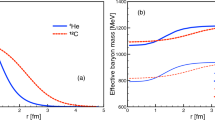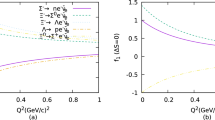Summary
This paper discusses π0 photoproduction above 800 MeV laboratory photon energy in terms of a vector-meson exchange and isobar model. Experimental data are shown to determine the ratios of magnetic to electric transition amplitudes to the second and third π-

isobars, and a tentative fit to cross-sections is exhibited. Vector-meson exchange is shown to be essential to the description of the recoil nucleon polarization and the higher-energy cross-sections. Finally, two polarization experiments are suggested which may contribute information about the third π-

isobar parity, and about the ω-exchange amplitude sign.
Riassunto
In questo articolo si discute la fotoproduzione di π0 al di sopra di 800 MeV di energia del fotone nel sistema di laboratorio in base allo scambio del mesone vettoriale e del modello isobarico. Si dimostra che i dati sperimentali determinano i rapporti fra le ampiezze delle transizioni magnetiche e quelle elettriche fino a quelle del secondo e terzo isobaro π-

, e si presenta un’approssimazione di tentativo della sezione d’urto. Si dimostra che lo scambio di mesoni vettoriali è essenziale nella descrizione della polarizzazione del nucleone di rinculo e delle sezioni d’urto a energie maggiori. Infine si suggeriscono due esperimenti di polarizzazione che possono fornire informazioni sulla parità del terzo isobaro π-ω, e sul segno dell’ampiezza dello scambio di ω.
Similar content being viewed by others
References
P. Salin:Nuovo Cimento,28, 1294 (1963). This reference contains a thorough bibliography of experimental data at energies <1 GeV.
R. Dashen andD. Sharp: to be published.
G. F. Chew, M. Goldberger, F. Low andY. Nambu:Phys. Rev.,106, 1347 (1957). (This paper is hereafter referred to as CGLN.)
SeeW. C. Williams:An Introduction to Elementary Particles (New York, 1961).
M. J. Moravcsik:Phys. Rev.,125, 734 (1962);J. Mathews: private communication.
J. J. Sakurai:Phys. Rev. Lett.,8, 300 (1962).
R. Dashen: private communication.
For details of multipole projection, seeJ. S. Ball:Phys. Rev.,124, 2014 (1961).
F. Talman, C. Clinesmith, R. Gomez andA. Tollestrup:Phys. Rev. Lett.,9, 177 (1963).
Whether or not the present treatment of the nucleon Born terms is considered appropriate, the arguments concerningE/M ratios should still be valid, since they are concerned with the role of imaginary amplitudes. Actually, from eqs. (9), we see that the total nucleon Born terms of relevance at 0° are approximately zero, so that only the isobar terms contribute.
Author information
Authors and Affiliations
Additional information
Work supported in part by the U. S. Atomic Energy Commission.
Rights and permissions
About this article
Cite this article
Beder, D.S. π0 photoproduction above 800 MeV. Nuovo Cim 33, 94–109 (1964). https://doi.org/10.1007/BF02734066
Received:
Published:
Issue Date:
DOI: https://doi.org/10.1007/BF02734066




